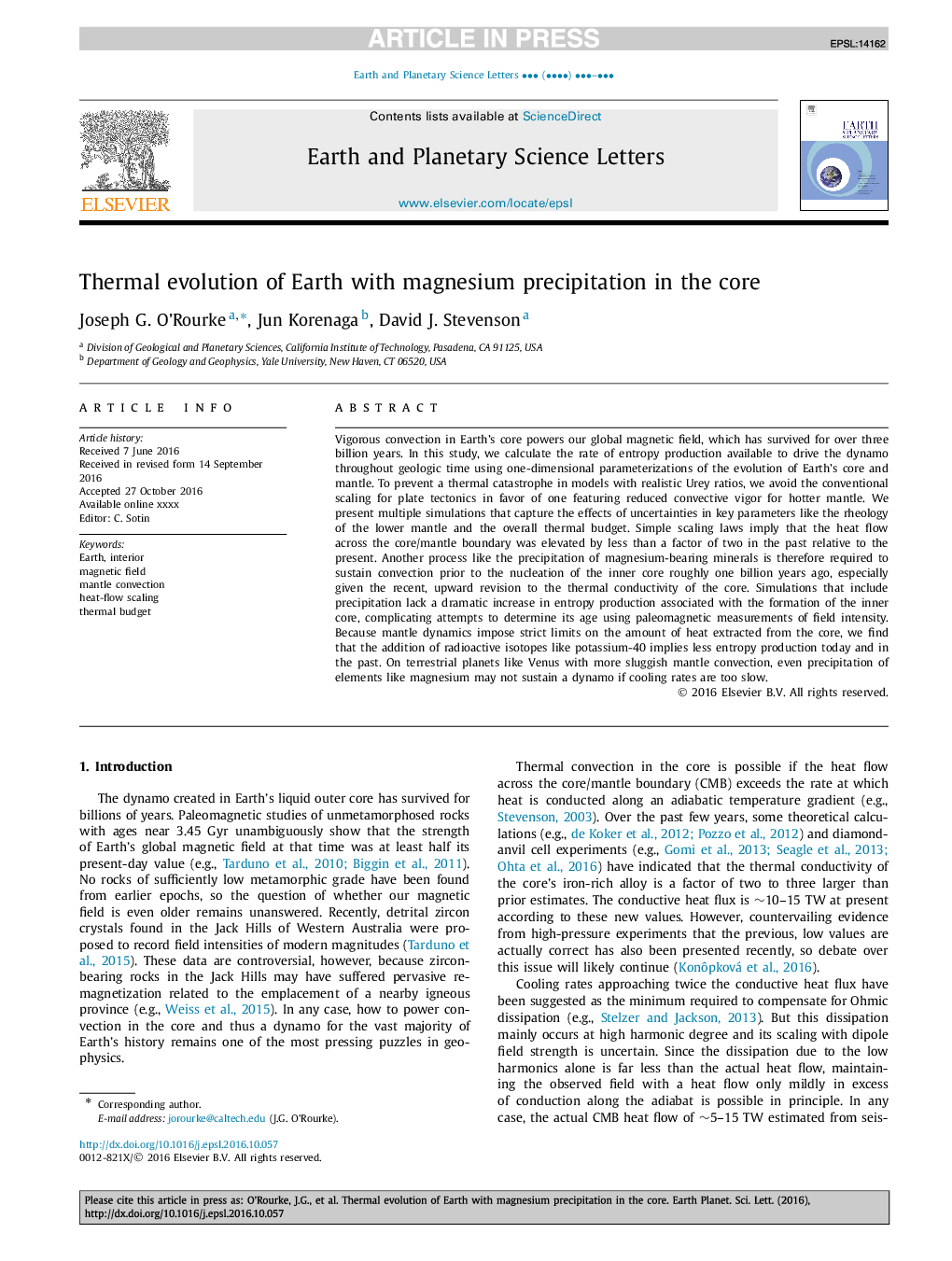| کد مقاله | کد نشریه | سال انتشار | مقاله انگلیسی | نسخه تمام متن |
|---|---|---|---|---|
| 5780021 | 1634698 | 2017 | 10 صفحه PDF | دانلود رایگان |
عنوان انگلیسی مقاله ISI
Thermal evolution of Earth with magnesium precipitation in the core
ترجمه فارسی عنوان
تکامل حرارتی زمین با بارگیری منیزیم در هسته
دانلود مقاله + سفارش ترجمه
دانلود مقاله ISI انگلیسی
رایگان برای ایرانیان
کلمات کلیدی
زمین، داخلی، میدان مغناطیسی، گرمازدگی مقیاس حرارت جریان بودجه حرارتی،
موضوعات مرتبط
مهندسی و علوم پایه
علوم زمین و سیارات
علوم زمین و سیاره ای (عمومی)
چکیده انگلیسی
Vigorous convection in Earth's core powers our global magnetic field, which has survived for over three billion years. In this study, we calculate the rate of entropy production available to drive the dynamo throughout geologic time using one-dimensional parameterizations of the evolution of Earth's core and mantle. To prevent a thermal catastrophe in models with realistic Urey ratios, we avoid the conventional scaling for plate tectonics in favor of one featuring reduced convective vigor for hotter mantle. We present multiple simulations that capture the effects of uncertainties in key parameters like the rheology of the lower mantle and the overall thermal budget. Simple scaling laws imply that the heat flow across the core/mantle boundary was elevated by less than a factor of two in the past relative to the present. Another process like the precipitation of magnesium-bearing minerals is therefore required to sustain convection prior to the nucleation of the inner core roughly one billion years ago, especially given the recent, upward revision to the thermal conductivity of the core. Simulations that include precipitation lack a dramatic increase in entropy production associated with the formation of the inner core, complicating attempts to determine its age using paleomagnetic measurements of field intensity. Because mantle dynamics impose strict limits on the amount of heat extracted from the core, we find that the addition of radioactive isotopes like potassium-40 implies less entropy production today and in the past. On terrestrial planets like Venus with more sluggish mantle convection, even precipitation of elements like magnesium may not sustain a dynamo if cooling rates are too slow.
ناشر
Database: Elsevier - ScienceDirect (ساینس دایرکت)
Journal: Earth and Planetary Science Letters - Volume 458, 15 January 2017, Pages 263-272
Journal: Earth and Planetary Science Letters - Volume 458, 15 January 2017, Pages 263-272
نویسندگان
Joseph G. O'Rourke, Jun Korenaga, David J. Stevenson,
